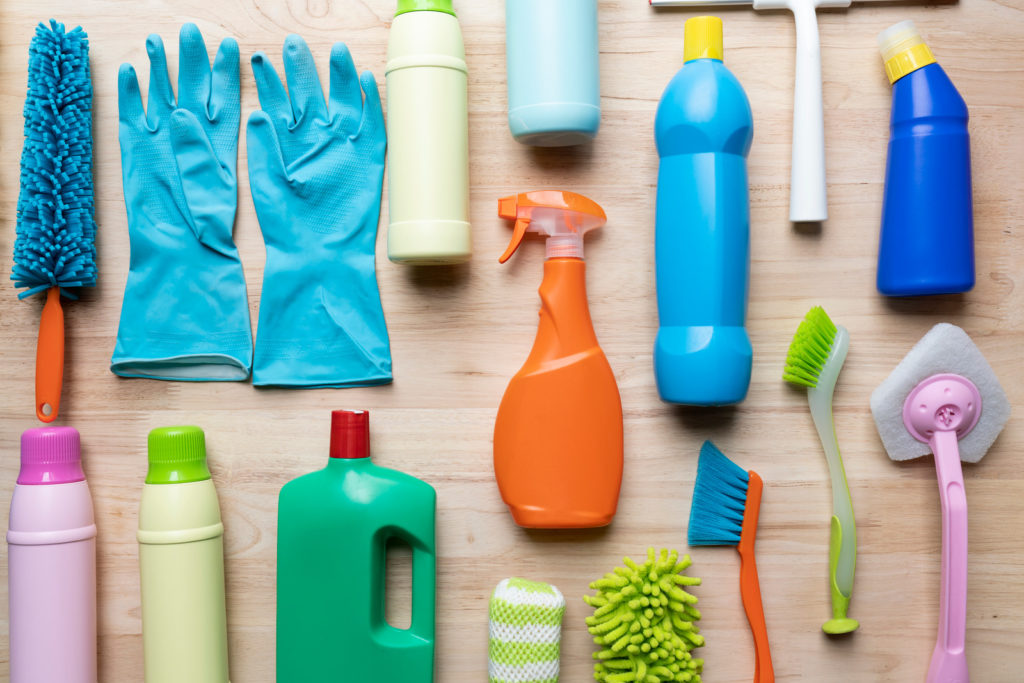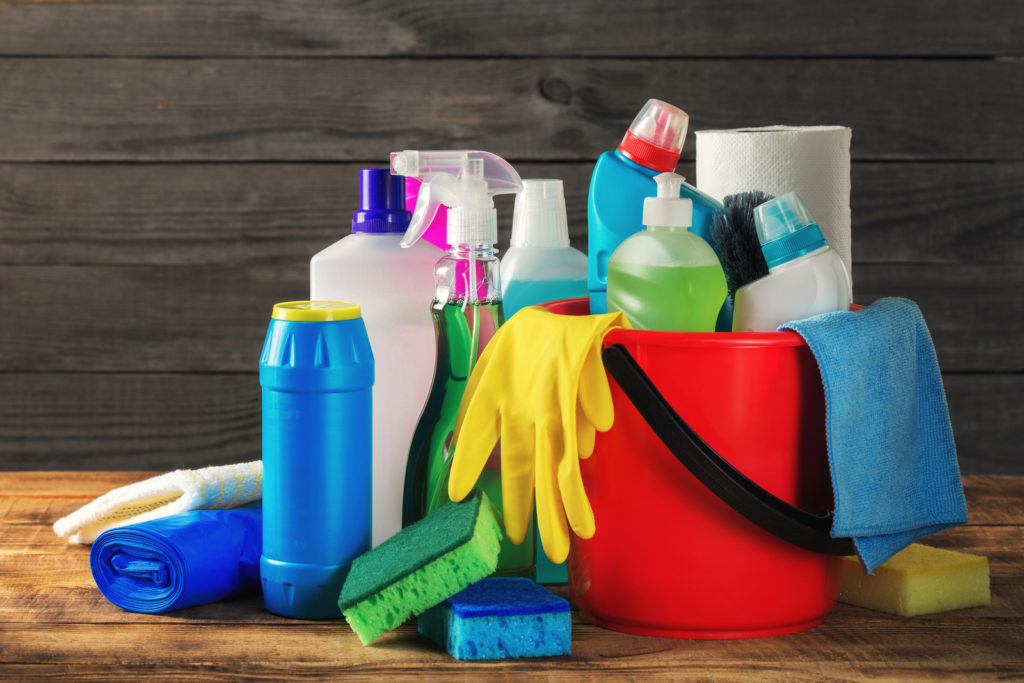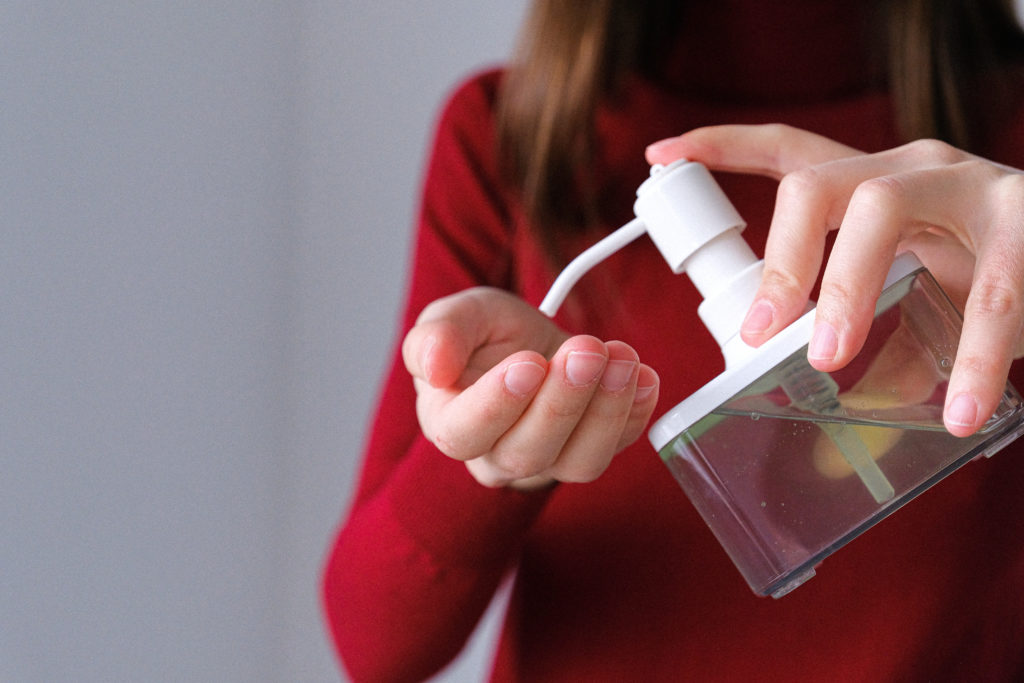Disinfectants are used for one simple reason, cleaning. They contain chemicals and chemical compounds that kill bacteria, mold and fungus.
Cleaning products use many different terms on their labels, sometimes you see labels that highlight the word ‘antibacterial’ or ‘sanitizing’ and sometimes, ‘disinfecting’.

These products make surfaces and our areas safe, especially for children and the elderly or those who are immunocompromised.
However, not all of these disinfectants are effective against every type of bacteria or germs.
Yes, we may think these products are keeping us healthy but some may be harmful to both our health and the environment.
Here’s what you need to know about different disinfectants and ingredients to consider for effective and safe cleaning.
Bleach (sodium hypochlorite)
The active ingredient in bleach is sodium hypochlorite, which can kill viruses, bacteria, and fungi.
It is a relatively cheap and highly effective disinfectant.
You can use this on frequently touched surfaces such as doorknobs and countertops and then leave it to dry for at least 10 minutes before wiping to effectively kill pathogens.
It kills some of the most dangerous bacteria, to name a few: staphylococcus, streptococcus, E. coli, salmonella, the flu and the common cold.
While bleach can help us disinfect effectively, it can irritate our skin. So always remember to put on some gloves when cleaning with bleach.
Bleach can also be hazardous to house pets, wildlife, and ecological health.
Hydrogen peroxide
This cleaner is not as strong as bleach but has antimicrobial properties that effectively kill viruses and bacteria.
It is also biodegradable. However, concentrated hydrogen peroxide is extremely dangerous and should only be used as a disinfectant at concentrations lower than 3 percent.
These typical concentrations can be found in drugstores.
A study in 2018 found that hydrogen peroxide was more effective in killing some forms of bacteria than quaternary ammonium compounds which are types of disinfecting agents seen in hospitals and other health centers.
Quaternary ammonium compounds
You might not be aware but these are widely used to disinfect surfaces and can be found in many household cleaning products.
Disinfectant wipes and sprays have these too!
If you’re looking for inexpensive and easy to prepare sanitizing applications, Quaternary ammonium compounds are the ones you are looking for.
These compounds are often paired with cleaning agents to make a product that’s both cleansing and disinfecting.
Some research has shown that quaternary ammonium compounds can effectively kill common dangerous bacteria, viruses, and fungi.
Alcohol (isopropanol or ethanol)
Rubbing alcohol, as what we call it at home, is a water-based solution that is composed of at least 70 percent ethanol or isopropyl alcohol.
Alcohol is effective against the influenza virus and is effective against a wide range of bacteria.
Most cleaning products that contain alcohol have at least a 70 percent solution, while hand sanitizers should contain at least 60 percent alcohol to be effective.
These products are effective disinfectants when used with enough high concentrations.
Ethyl alcohol with a 70 percent concentration is a powerful broad-spectrum germicide and is considered more effective than isopropyl alcohol.
Alcohol is flammable so it is best to use this product with care.
Soap and water
According to Unicef.org, one of the cheapest, easiest, and most important way to prevent the spread of a virus is to wash your hands frequently with soap and water.
Washing your hands with soap and water for 20 to 30 seconds can remove 97 percent of germs.
Just to clarify, soap doesn’t kill germs on our hands, it removes them.
Some germs stay on our hands because of the oils and grease. Soap molecules are a type of surfactant, which means they act as a mediator between the water and oil molecules, and bind with both of them at the same time.
Yes, household cleaners are better disinfectants for surfaces, but soap is more effective when it’s rubbed and worked into a lather, scrubbing all surfaces of the hands, including the back of your hands, between fingers and under nails then rinsing thoroughly with running water.
Washing your hands with soap and water is one of the main recommendations for limiting the spread of respiratory viruses such as the novel coronavirus.
These are just some products that you can check for effective cleaning, you can still make your own research before trying them out!
Do you know more tips and facts? Let us know in the comments section of this video.
/dbs




